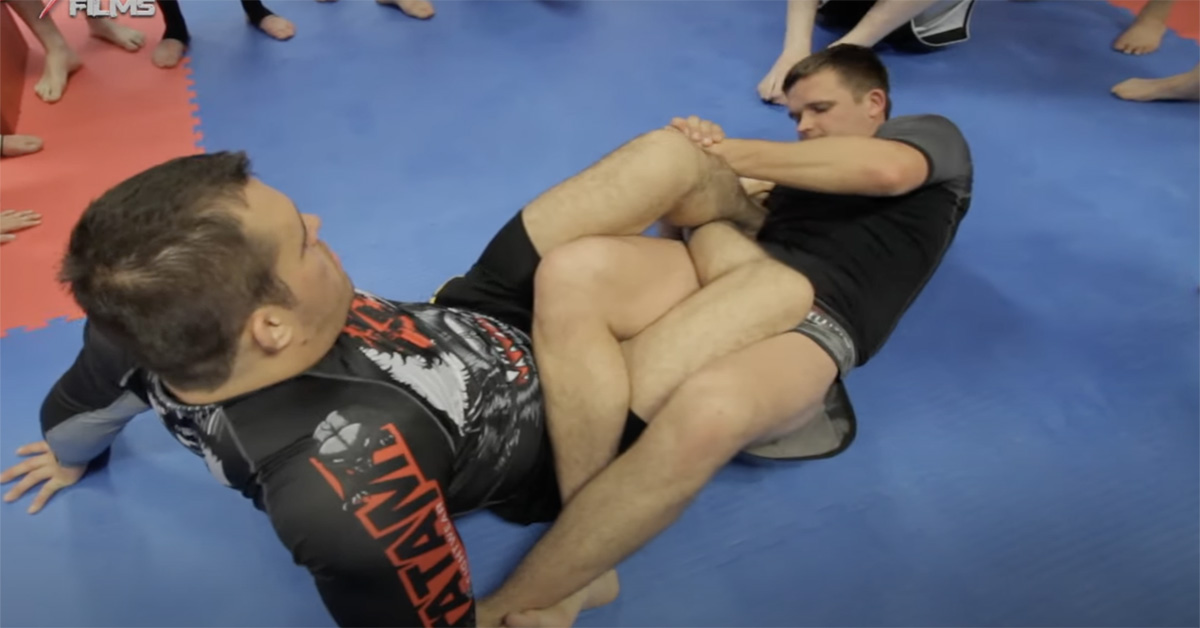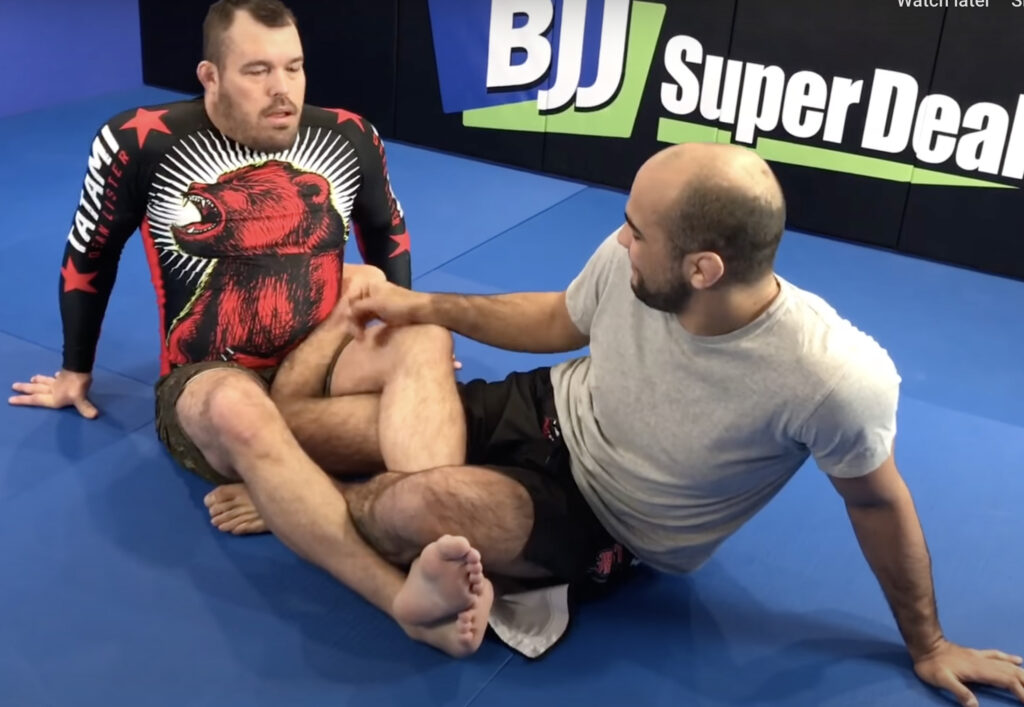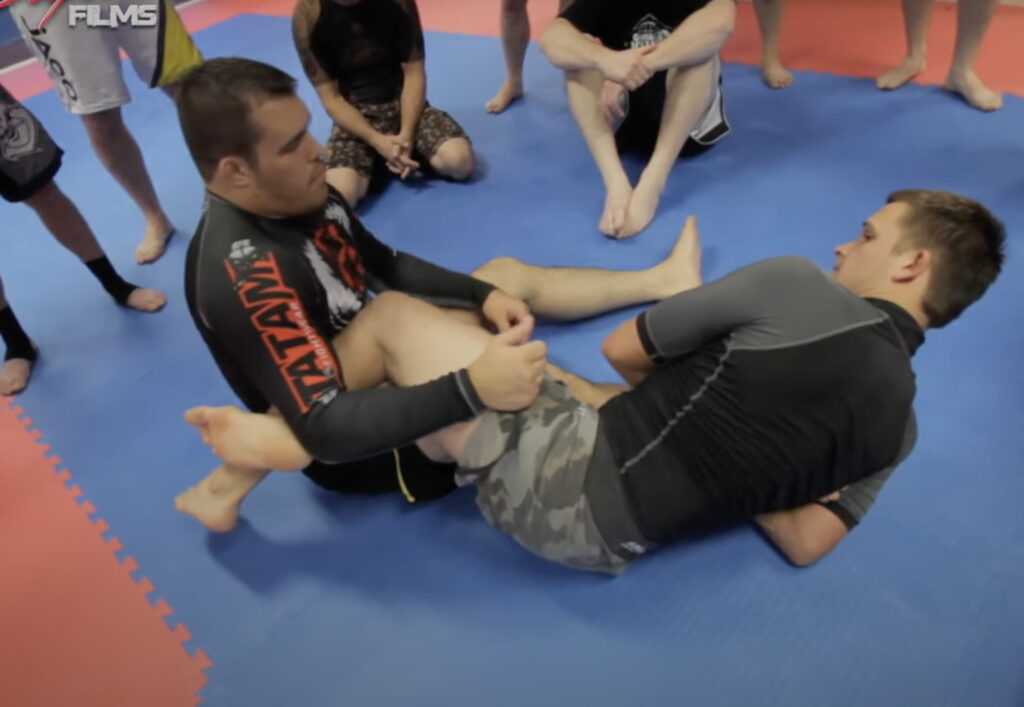Heel Hook – BJJ Submission

Heel hooks are now more prevalent than ever in Jiu Jitsu. Although for decades this was not the case as they were strictly forbidden from competition.
In recent years, the times have changed and the once banned submission is now allowed in many major tournaments.
Here is our breakdown of the heel hook. We’ll go through when it was developed and the mechanics behind one of the most dangerous moves in grappling. Then we’ll go over various setups into the submission and give important tips and details for locking it in.
When were heel hooks developed?
Heel hooks have been around long before Jiu Jitsu was developed. Within Jiu Jitsu, the move has been frowned upon and has not been allowed in most academies for decades.
Where it was developed along with most other leg locks was within Sambo, A martial art that has historically trained leg locks and favored them, when BJJ frowned upon them.
Leg locks like the heel hook have really only been used in Jiu Jitsu competitions since the early 2000s. Predominantly in ADCC rule sets and later in EBI rule sets.
Grapplers from Dean Lister, Gary Tonon, Eddie Cummings, and Gordon Ryan are the ones most credited with their popularity.
As Jiu Jitsu continues to progress, heel hooks will continue to be a game changer in competitions.
The mechanics of the heel hook
The name is heel hook, but this submission actually doesn’t attack the heel. What it does is twist your opponent’s knee and will tear ligaments in just moments if they do not tap.
You use your legs like a vice to lock your opponent’s leg in place and work to isolate their heel. Then one you put their leg at an angle and free their heel up.
From there, all you need is a slight turn to lock on the pressure. Your opponent must immediately tap or risk a major knee injury.
Basics outside heel hook

For the first technique, we’ll focus more on the steps to getting the outside heel hook rather than the entries. We’ll focus on those in the other techniques.
Let’s say you have your outside leg hooked over the leg you’re attacking and hooked under your opponent’s far leg. Both of their legs are controlled and you’re ready to go into your outside heel hook.
Before you go for the heel hook, first make sure you’re controlling above your opponent’s knee, so they can’t escape. Second, use your top leg to bend your opponent’s leg to create an angle before attacking it.
Now the first step to get the heel hook iis to turn into the foot you’re attacking to isolate the heel. You isolate their heel by hooking your tricep/armpit over the top of your opponent’s foot to hold it in place.
This isolates their heel and now you’re ready to put on your hook. Put on your hook by turning into their heel and catching it with the blade of your wrist.
Once the heel is hooked, clasp your hands and turn with your body, which will immediately put on the pressure. Be sure not to just turn with your arms or your opponent’s heel will slide out.
The Inside heel hook
Opposite of the outside heel hook is the inside heel hook. The difference is that with the outside heel hook, you attack their leg on your outside hip. An inside heel hook is obviously done on your inside hip.
An inside heel hook also comes on a lot quicker, so be mindful of that when drilling with a partner.
From the saddle position similar to the first technique, you’re going to triangle your legs and turn them out. You’re also going to fall to your outside hip, so your elbow doesn’t block you from getting your grip.
Once you fall to your outside hip, cup your opponent’s knee to bend their leg and expose the heel.
Next trap the top of their foot with your armpit/tricep and hook their heel with the blade of your wrist. As soon as you clasp your hands together and turn your body, the pressure comes on.
50/50 heel hook

The 50/50 is one of the first leg control positions you learn that is really easy to remember. You have a leg and your opponent has a leg, but it’s also dangerous, because your opponent has a leg.
So remember to keep your feet tightly crossed, so you don’t get submitted when going for a submission.
Start by lifting your hips and bring your opponent’s foot to your inside hip. If they defend by crossing your legs, there is an easy method to separate their legs.
Place your outside hand on your opponent’s and push it as you hip out to break the cross. Now with their heel free go into isolating your opponent’s heel and locking in your grip.
Hook their heel with the blade of your wrist, connect your hands, elbows in, and turn your body.
Single leg X heel hook
Heel hooks are easy to get from single leg x. Before we show how to get the heel hook, we’ll detail how to hold the single leg x position.
Hold single leg x by hooking your outside leg around your opponent’s leg and place your foot on their hip. Your other leg hooks under your opponent’s other leg.
Cup your opponent’s knee and push it in to expose their heel. Once it’s exposed go through the normal finishing sequence of hooking your opponent’s heel for the finish.
Heel hook knee shield counter
When you’re in your opponent’s half guard and they have a knee shield, you can easily get a counter heel hook. Cup behind your opponent’s knee and fall back to your outside hip.
Once you fall to your side, your opponent’s heel is exposed. Turn your body into your opponent’s heel, get your grip, and go for the finish.
Backstep heel hook
Doing a back step is a normal way to counter a guard like De La Riva. It’s also a great way to go into a heel hook.
Start the technique by stepping in between their legs and clenching your opponent’s head. With their head controlled, do a backstep with your back foot.
Bringing your knee under your opponent’s leg and cupping behind their knee as you sit back. When you cup and pull your opponent’s knee this opens up their heel.
Hook their heel and get your grip to finish your heel hook.
Half guard to ashi-garami heel hook
When you have a knee shield on your opponent, one option you have is to go to a heel hook. With your hands up blocking, use them along with your shield to push your opponent to make space.
Bring the foot of your shield leg in between your opponent’s legs. Next grab behind your opponent’s arm and knee and pull yourself into their leg.
As you go in, hook your leg around your opponent’s leg to bend it and expose their foot. From here you have three submission options. Ankle lock, toe hold, and heel hook.
For the heel hook, go through the normal process to hook the heel and finish it.
Details and tips for doing a heel hook
A heel hook comes on quickly, but it can all fall apart if you miss a detail. Here are important details and tips for doing a heel hook.
- Turn into the heel: To get the heel hook, you need to first turn your body into your opponent’s foot. Doing this isolates their foot and opens up your path to take their heel.
- Trap top of opponent’s foot: When you go for your hook, make sure that you trap the top of your opponent’s foot with your armpit/tricep.
- Leg control: Like with all leg locks, you need to control your opponent’s leg above their knee. If you don’t, you have no control over their legs.
- Hip alignment: Your hips need to stay in line with your opponent for the heel hook to work.
- Bend opponent’s leg: For heel hooks, ankle locks, and toe holds your opponent’s leg needs to be bent at an angle. Without their leg bent, you can’t do a heel hook.
- The hook: When you hook your opponent’s heel, use the blade of your wrist to hook their heel. Placing the blade of your wrist right into their achilles tendon.
- Turn with your body: Turn with your whole body and not just your arms when putting on the pressure. Your grip will slip off if you just turn with your arms.






